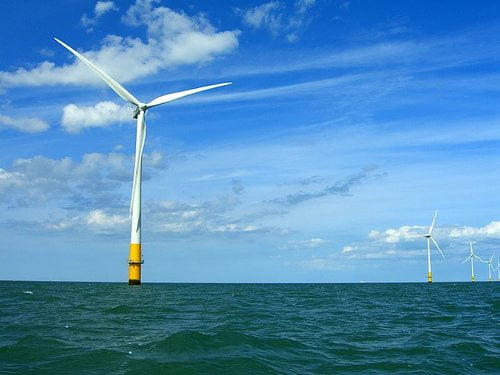

Environment
Offshore renewables projects ‘stepping stone’ habitats for marine wildlife
A new study has suggested that offshore renewable energy projects such as wind farms can help certain marine species to thrive, offering novel habitats to creatures that would otherwise be threatened or displaced.
The study tried to assess how the presence of wind, wave and tidal energy developments, such as those off the coasts of Scotland and Northern Ireland, could affect the lives of marine fauna, in particular pelagic larvae such as barnacles, mussels and limpets.
They found out that in many cases, the infrastructure provided “stepping stone” habitats, which could help species to settle in areas which they would not otherwise colonise, and can help vulnerable ones recover from the effects of pollution or climate change.
However, the research warns it might also have negative effects, as it can ease the spread of invasive species. It therefore added that these sites should be monitored to ensure the ecological balance is preserved.
The study said that species like the lined top shell snail and the purple sea urchin, for instance, which are currently common in Northern Ireland, might be able to colonise Scottish coasts, as renewable energy devices create “new dispersal pathways”, which allow the dispersal of species.
Offshore infrastructure is not the only way in which clean energy can benefit wildlife. A recently launched initiative by the BRE National Solar Centre and various wildlife charities outlined guidelines for solar developers that would help turn large solar farms into biodiversity spots, to help tackle the decline of British wildlife.
Update: Charles Clover, chairman of the Blue Marine Foundation, said, “We are already in discussions with wind farm companies around the British coast about how they might help with the restoration of native species.
“One of these is the native oyster, which could do with some help. It might be possible to enhance oyster reproduction considerably by encouraging them to form reefs around the base of offshore wind turbines.
“There also seems to be a symbiotic relationship between oysters and bass, which is not understood but would be a worthy subject for experiment. Obviously one would not want to encourage introduced species such as gigas, the Portuguese oyster in the process.”
Photo: phault via flickr
Further reading:
State of Nature report reveals alarming UK wildlife loss
National Trust opens Snowdonia hydro plant and launches renewables trading arm
Plans to turn solar farms into biodiversity hotspots unveiled
Offshore wind subsides will allow industry to compete, says Dong Energy
Declining health of oceans of ‘gravest concern’ to life on Earth


 Environment10 months ago
Environment10 months agoAre Polymer Banknotes: an Eco-Friendly Trend or a Groundswell?

 Environment11 months ago
Environment11 months agoEco-Friendly Home Improvements: Top 7 Upgrades for 2025

 Features9 months ago
Features9 months agoEco-Friendly Cryptocurrencies: Sustainable Investment Choices

 Features10 months ago
Features10 months agoEco-Friendly Crypto Traders Must Find the Right Exchange




























